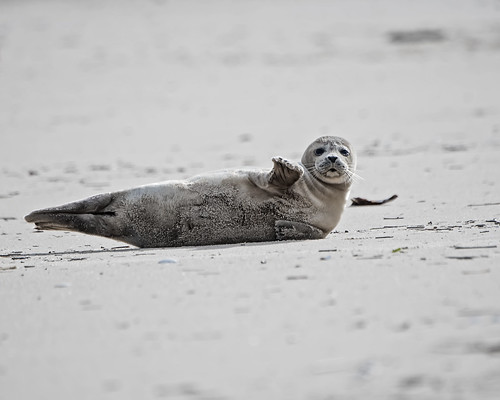Protected Aquatic Wildlife Among Maryland’s Summer Visitors
Marine Mammal, Sea Turtle Strandings Should be Reported
 As warm weather settles in and the days grow longer, Maryland’s waters become a destination not for just humans, but also marine animals.
As warm weather settles in and the days grow longer, Maryland’s waters become a destination not for just humans, but also marine animals.
In the past century, 23 different species of marine mammals and sea turtles have been documented in and around state waters. Visitors include bottlenose dolphins, loggerhead turtles, humpback whales, harp seals and manatees.
“While these marine animals are an awesome sight, sometimes they can be disoriented and lost, leading to a marine mammal or sea turtle stranding,” Maryland Department of Natural Resources State Fish and Wildlife Veterinarian Cindy Driscoll said. “It is important that the public understand that some of these animals are protected by law and should be treated with care and compassion.”
In fact, it is estimated that more than a dozen aquatic animals find themselves stranded on Maryland’s inland and ocean coasts every year. Maryland’s Marine Mammal and Sea Turtle Stranding Program staff respond to these stranded marine mammals and sea turtles in state waters including the Chesapeake Bay and Atlantic Ocean.
Program staff works in collaboration with the National Aquarium to respond to stranded or dead animals and collects relevant data from these events, which is then incorporated into policies that conserve and protect these species. Marine animals are federally protected under the Marine Mammal Protection Act. Sea turtles and whales are protected under the 1973 Endangered Species Act. The law prohibits any form of capturing, collecting or harassing these aquatic animals (either dead or alive).
Anyone who finds a stranded marine mammal or sea turtle should take the following actions:
- Do not touch the animal – even if it is dead.
- Call Maryland’s Marine Mammal and Sea Turtle Stranding Program at 800-628-9944.
- Record the location using latitude/longitude, a street address, and/or description with landmarks.
- Record the length, size, color, noticeable body parts and movements (if alive).
- Take photos of the animal.
- Stand by the animal until a stranding staff person calls or arrives.
